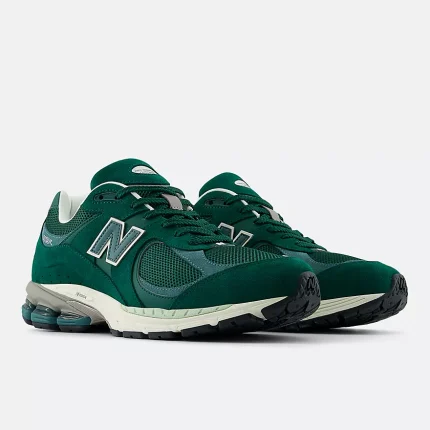In the competitive world of automotive marketing,
car branding stickers are not just about the vehicles they produce, but the stories they tell and the emotions they evoke. Car logos, especially those from iconic manufacturers, play a pivotal role in shaping consumer perception. These logos are more than just visual symbols—they represent the values, heritage, and aspirations of both the company and its customers. From the sleek prancing horse of Ferrari to the reliable blue oval of Ford, car logos serve as powerful tools in brand identity and consumer decision-making.
The Role of Branding in the Automotive Industry
Branding in the automotive industry is a strategic endeavor that goes beyond just creating a logo. It involves crafting an entire narrative around the vehicle and the experience it offers. A well-designed logo encapsulates the essence of the brand’s identity—whether that’s luxury, performance, reliability, or innovation. For consumers, these logos can trigger immediate associations with the qualities they value most in a vehicle, from safety to speed.One of the most significant aspects of car branding is how it appeals to emotional connections. Car buyers often look for more than just practical functionality in a vehicle—they seek a brand that aligns with their lifestyle, values, and personal image. For instance, luxury brands like Mercedes-Benz or BMW are often associated with wealth, status, and sophistication, while brands like Jeep or Land Rover evoke a sense of adventure and ruggedness.
Ferrari – The Prancing Horse
One of the most recognizable car logos in the world, the Ferrari logo is a black prancing horse on a yellow shield. The horse symbolizes power, elegance, and speed, embodying the brand’s high-performance sports cars. The yellow background represents the city of Modena, where Ferrari was founded. The Ferrari logo doesn’t just sell a car—it sells an aspiration to achieve greatness and live a life of luxury and excitement.
Mercedes-Benz – The Star
The three-pointed star of Mercedes-Benz is synonymous with luxury, precision engineering, and superior quality. The star represents the brand’s commitment to producing vehicles that excel in every aspect—land, sea, and air. The simplicity and elegance of the logo reflect Mercedes-Benz’s focus on understated luxury and advanced technology.
Ford – The Blue Oval
Ford’s blue oval logo has become one of the most iconic symbols in the automotive world. Its simplicity is its strength, conveying reliability and trustworthiness. The blue color represents stability, while the oval shape is associated with unity and inclusivity. Ford’s logo speaks to a broad audience, emphasizing American innovation and practical, durable vehicles that cater to the everyday consumer.
BMW – The Roundel
BMW’s roundel logo consists of a blue and white checkered pattern that represents the colors of the Bavarian flag. Initially, the logo was designed to symbolize the company’s roots in aircraft engine manufacturing, with the blue and white representing the sky and the motion of the engine. Over time, it has come to represent a sense of German precision, luxury, and high performance. The simplicity and elegance of the roundel make it a timeless design.
How Logos Influence Consumer Perception
A logo’s impact on consumer perception is multifaceted. On one hand, it establishes instant recognition. A well-established brand like Porsche or Audi can evoke a mental image of the car even before the consumer sees it in person, due to the power of their iconic logos. On the other hand, the logo also plays a role in shaping perceptions of the car’s quality, price point, and overall appeal.
Trust and Reliability
When consumers purchase a vehicle, they want to feel confident in their investment. Logos like Toyota’s “T” and Honda’s stylized “H” are associated with trust, reliability, and long-lasting durability. These brands have earned a reputation for building cars that are dependable and often last for many years, which is directly communicated through the strength of their logos.
Luxury and Status
Luxury car logos such as Rolls-Royce, Lamborghini, and Bugatti instantly signal exclusivity, status, and high-end craftsmanship. These logos are not just symbols of wealth—they are associated with superior engineering, cutting-edge technology, and exceptional performance.
Performance and Innovation
For brands like Tesla, Porsche, and Audi, their logos are inextricably linked to high-performance engineering, innovation, and cutting-edge technology. Consumers looking for cars that push the boundaries of performance are often drawn to these brands because their logos signal a commitment to excellence and a forward-thinking approach to the automotive industry.
The Evolution of Car Branding
The role of car logos in consumer perception continues to evolve with shifting market dynamics and consumer preferences. As automakers move towards electric vehicles (EVs) and sustainability, their branding efforts reflect these changes. For instance, the Tesla logo symbolizes not just a car, but a technological revolution. Similarly, companies like Rivian and Lucid Motors are trying to create their own unique brand identities in the EV space, with logos that emphasize modernity and environmental consciousness.
click here for more info…
Conclusion
The power of car branding cannot be overstated. Iconic logos shape consumer perception by embodying the values and promises of the brand, evoking emotional responses, and creating instant recognition. Whether it’s the prancing horse of Ferrari or the blue oval of Ford, these logos are not just symbols—they are storytellers. They communicate power, performance, luxury, or reliability, shaping consumer behavior and influencing purchasing decisions. As the automotive industry continues to evolve, the importance of effective branding will only grow, making logos an indispensable tool in the drive to connect with consumers.



